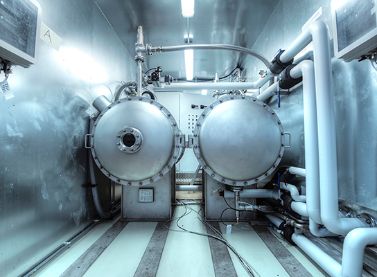Advanced oxidation process (AOP) has been dubbed the “water treatment process of the 21st century.” Learn more about how AOP works, its effectiveness, and the strengths and limitations of AOP as a treatment option in a recent Q&A with Alex Bettinardi.
How does the advanced oxidation process (AOP) work?
The advanced oxidation process removes contaminants in water and wastewater by oxidation through reactions with highly reactive hydroxyl radicals (.OH). This chemical process uses ozone (O3), hydrogen peroxide (H2O2), and/or UV light.
How effectively does it reduce the concentration of contaminants?
AOP has the capability of reducing the concentration of contaminants from several-hundred ppm to less than 5 ppb. By using the strongest oxidants, AOP can efficiently oxidize essentially any contaminant in water at a diffusion controlled reaction speed. Contaminants are rapidly converted into tiny inorganic molecules.
Why is AOP popular for tertiary treatment?
Due to its high oxidative capability, AOP can reduce even the most difficult organic and inorganic contaminants. The contaminant materials are converted into stable inorganic compounds, such as water, carbon dioxide and salts. Sometimes AOP is the only option when traditional biological processes are not effective.
How can AOP support compliance with increasing water pollution regulations?
AOP can effectively reduce biologically toxic or non-degradable contaminants, such as aromatics, pesticides, petroleum constituents, and volatile organic compounds. After undergoing AOP, cleaned wastewater can be reintroduced into streams or sewage treatment. AOP can be added to an existing traditional water treatment system to meet changing regulations without redesigning a completely new system.
Why is AOP called the “Water Treatment Process of the 21st Century?”
AOP is a promising solution for water and wastewater treatment challenges. By efficiently reducing the concentration of contaminants, AOP greatly decreases the Chemical Oxygen Demand (COD) and the Total Organic Carbon (TOC).
What are the advantages of using ozone in the advanced oxidation process (AOP)?
When ozone is used in the AOP, the strongest oxidants that can be applied in water reduce contaminants with high COD or non-biodegradable molecules. Ozone has the unique ability to efficiently treat groundwater polluted by metals, such as iron, manganese, as well as hydrogen sulfide (H2S). A significant advantage of ozone is that the UVT (ultraviolet transmittance) of the water is irrelevant for ozone treatment; ozone is effective even when the UVT is very low.
Are new harmful substances added into the water with this process?
The advanced oxidation process does not add any hazardous materials to the water. Since ozone is one of the most effective oxidizing agents, the formation of byproducts is very low.
Is this a good solution for reducing micro-pollutants in wastewater?
Micro-pollutants are becoming a serious health concern with more countries taking steps to address this issue. Ozone is able to treat non-biodegradable products (such as micro-pollutants) that can be missed in traditional treatment processes. Ozone is able to transform these harmful substances into more biodegradable materials that are absorbed and decomposed on the biological activated filter.
1,4-dioxane, for example, is a contaminant of emerging concern that is used widely as a stabilizer in certain solvents, paint strippers, greases and waxes. According to US EPA, “1,4-dioxane is a likely human carcinogen and has been found in groundwater at sites throughout the United States. The physical and chemical properties and behavior of 1,4-dioxane create challenges for its characterization and treatment. It is highly mobile and does not readily biodegrade in the environment.” Ozone AOP is an effective treatment for 1,4-dioxane.
Ozone AOP is also a very effective solution against mycotoxins in drinking water sources, including harmful blue-green algae which is becoming a growing problem. In addition to taste and odor issues, blue-green algae, also called cyanobacteria, can produce cyanotoxins, which can cause a host of adverse health effects in humans.
How do I determine if using ozone in the advanced oxidation process is the most cost-effective solution for a specific facility?
A conversation with a knowledgeable supplier will help determine if this is best solution for a treatment facility.


